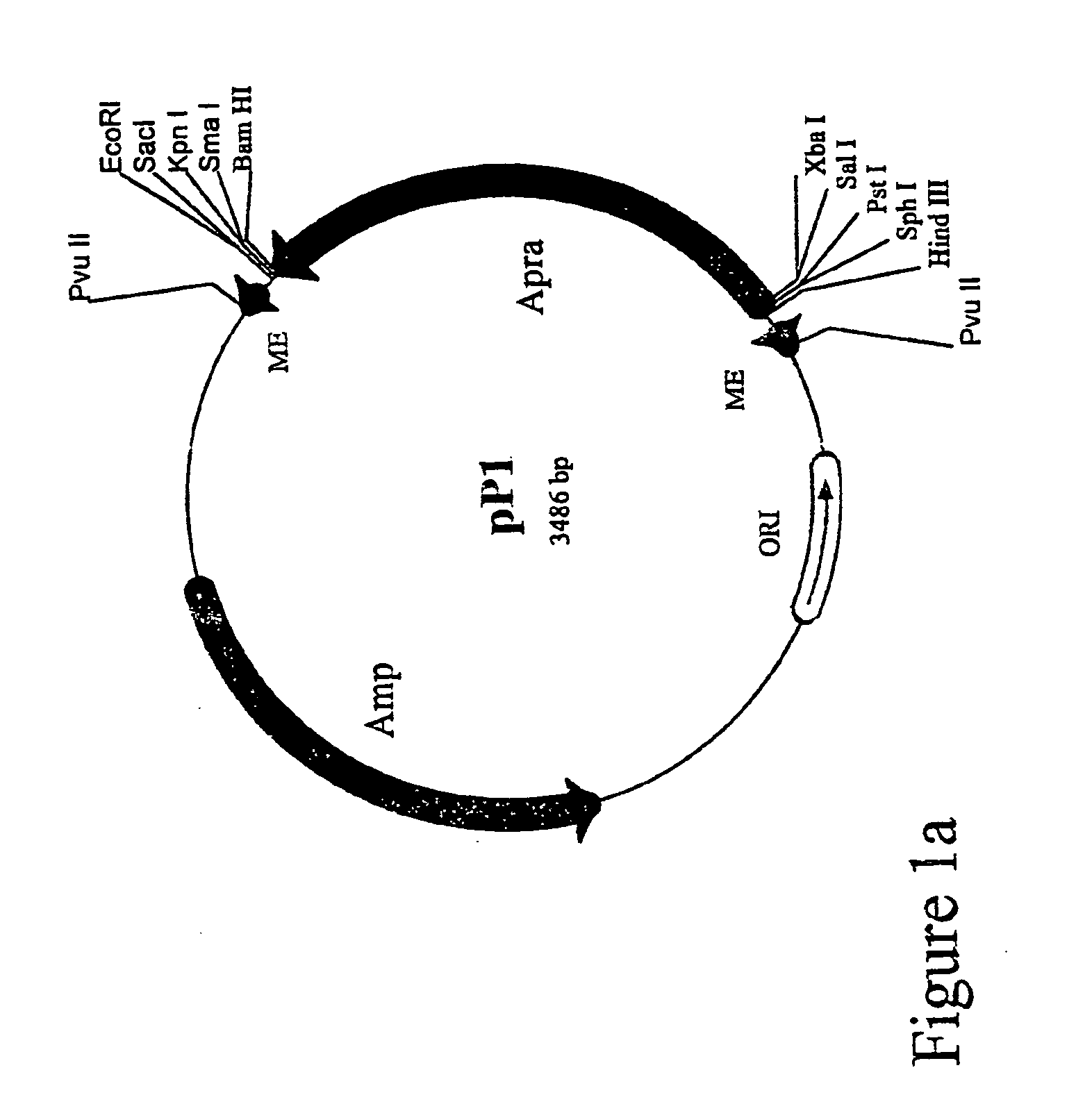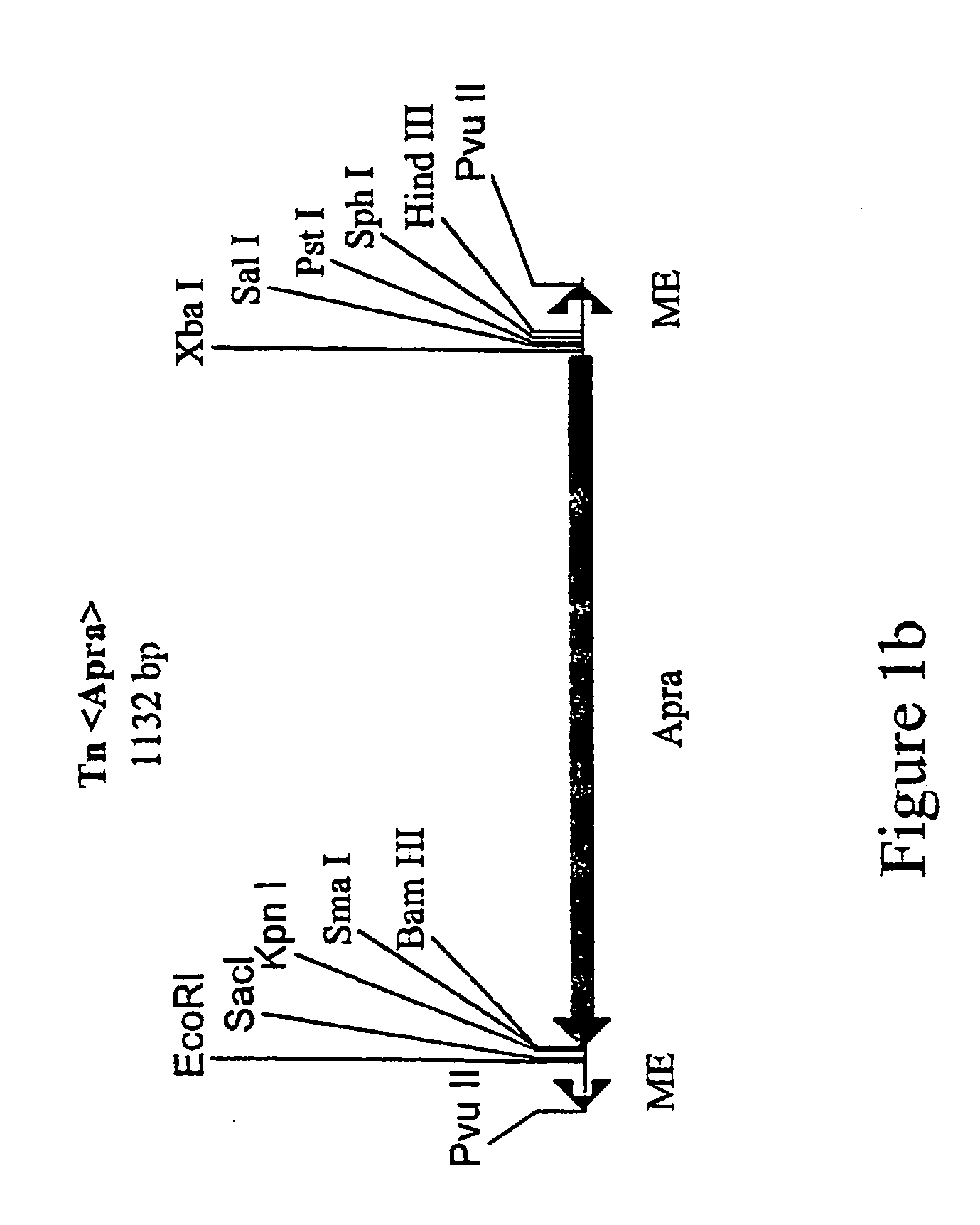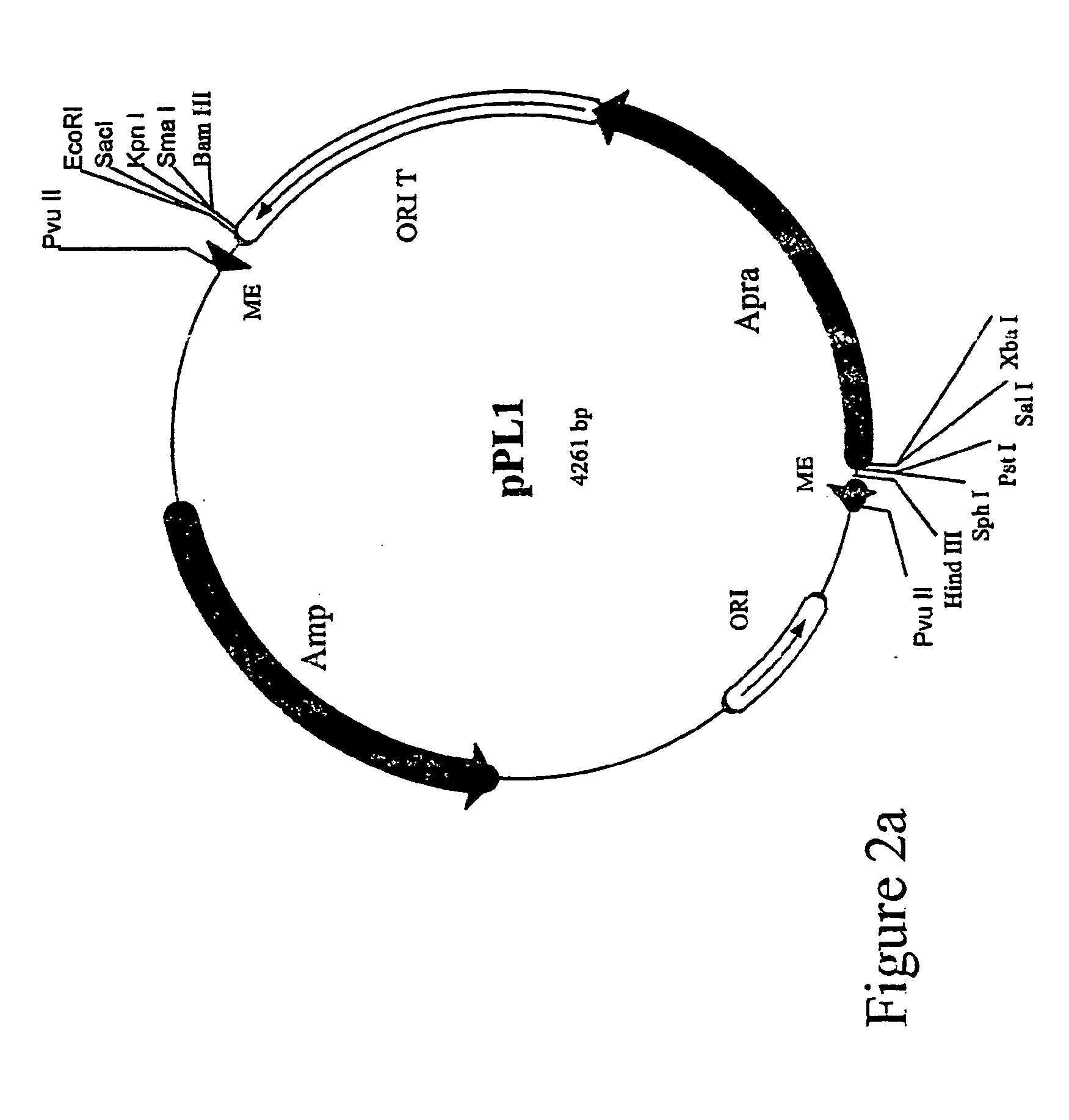Method for the expression of unknown environmental dna into adapted host cells
a technology of environmental dna and host cells, applied in the field of nucleic acid production, analysis and cloning methods, can solve the problems of limited chemical diversity, limited access, and impeded exploitation of this diversity, and achieve the effect of stable maintenance and propagation of environmental dna
- Summary
- Abstract
- Description
- Claims
- Application Information
AI Technical Summary
Benefits of technology
Problems solved by technology
Method used
Image
Examples
Embodiment Construction
28] The invention provides novel strategies, methods and products for generating and analysing combinatorial gene libraries. As indicated above, the invention discloses, particularly, methods of analysing libraries of polynucleotides, said polynucleotides being contained in cloning vectors having a particular host range, the methods comprising (i) selecting cloning vectors in the library which contain a polynucleotide having a particular characteristic, (ii) modifying said selected cloning vectors to allow a transfer of said vectors and / or expression of the polynucleotide which they contain into a selected host cell, and (iii) analysing the polynucleotides contained in said modified vectors upon transfer of said modified vectors into said selected host cell, such as by genetic, biochemical, chemical or phenotypical approaches.
[0029] In a most preferred embodiment, the methods allow stable transfer and propagation of large environmental nucleic acids in a selected host following init...
PUM
| Property | Measurement | Unit |
|---|---|---|
| temperature | aaaaa | aaaaa |
| temperature | aaaaa | aaaaa |
| chemical diversity | aaaaa | aaaaa |
Abstract
Description
Claims
Application Information
 Login to View More
Login to View More - R&D
- Intellectual Property
- Life Sciences
- Materials
- Tech Scout
- Unparalleled Data Quality
- Higher Quality Content
- 60% Fewer Hallucinations
Browse by: Latest US Patents, China's latest patents, Technical Efficacy Thesaurus, Application Domain, Technology Topic, Popular Technical Reports.
© 2025 PatSnap. All rights reserved.Legal|Privacy policy|Modern Slavery Act Transparency Statement|Sitemap|About US| Contact US: help@patsnap.com



